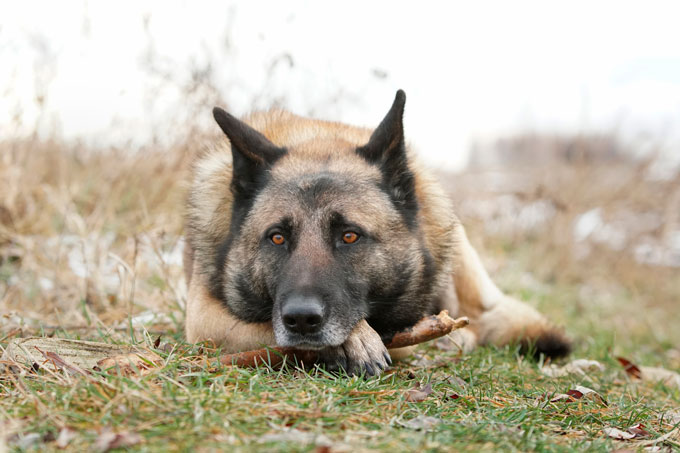What to Do If Your Dog Can't Get Up

It's a scary situation. Maybe you've been at work all day and come home to find it. Or perhaps you hear whining in the middle of the night and wake up to see your dog not able to rise. Or you could let your dog out into the back yard and realize he didn't come back when you expected.
However it happens, finding that your dog is unable to get up is terrible. When it happens, it's an emergency, and you should get your dog to the vet right away.
Hopefully, this will never happen to your dog, but take a look at the rest of this article to learn some common causes of this condition and what you should do. That way, if it does happen to you, you'll know what to do, and that can make a stressful situation a little more bearable.
Causes for a Dog Being Unable to Get Up
If a dog is not standing, it could be that he collapsed or that he isn't able to stand up. Some of the most common causes for this in dogs include:
- Trauma or injury, especially fractures, of the legs, neck, or back.
- IVDD (intervertebral disc disease) causing paralysis. This is when the material of one or more discs, which normally provide cushion between spinal vertebrae, has prolapsed and is pressing against a nerve.
- Heart disease, especially congestive heart failure.
- Cancer
- Low blood sugar. This is usually seen in dogs with diabetes that receive too much insulin or in young, tiny breed dogs.
- Blood loss. This is often internal blood loss that can't be seen and could be caused by a clotting disorder, hemangiosarcoma, or trauma such as being hit by a car.
- Organ failure or overwhelming infection.
- Bad hip dysplasia or severe arthritis of the hips, back, and knees.
What to Do If Your Dog Can't Get Up
As you can see from the list of causes above, a dog that can't get up is experiencing an emergency and should be seen by a veterinarian right away. You will need to get him to your vet or the closest emergency vet.
Be aware that many dogs that can't get up are in pain, so take care when trying to lift your dog and move him to the car. It's a good idea to muzzle your dog first, to ensure he doesn't bite. Keep in mind that even the nicest dog, who doesn't want to hurt anyone, may bite from pain.
If you don't have a muzzle, you can make a homemade one with a soft, long piece of fabric.
Lift your dog with one arm under the chest in front of the front legs and one under the rump behind the rear legs. Muzzle the dog first.
If you can't lift your dog, you may be able to help him walk to the car by having a helper. One of you can lead him with a leash and the other can use a towel slung just in front of the rear legs across the abdomen to support the rear end.
You may need to carefully inch a heavy blanket under your dog and enlist help to carefully lift the four corners of the blanket and carry your dog that way.
You May Also Like These Articles:
How to Know When to Go to the Emergency Vet
4 Easy Ways to Improve Your Dog's Quality of Life
Sources of Hidden Pain in Dogs
5 Often-Overlooked Dog Care Areas
Disclaimer: This website is not intended to replace professional consultation, diagnosis, or treatment by a licensed veterinarian. If you require any veterinary related advice, contact your veterinarian promptly. Information at DogHealth.com is exclusively of a general reference nature. Do not disregard veterinary advice or delay treatment as a result of accessing information at this site. Just Answer is an external service not affiliated with DogHealth.com.
Notice: Ask-a-Vet is an affiliated service for those who wish to speak with a veterinary professional about their pet's specific condition. Initially, a bot will ask questions to determine the general nature of your concern. Then, you will be transferred to a human. There is a charge for the service if you choose to connect to a veterinarian. Ask-a-Vet is not manned by the staff or owners of DogHealth.com, and the advice given should not delay or replace a visit to your veterinarian.



